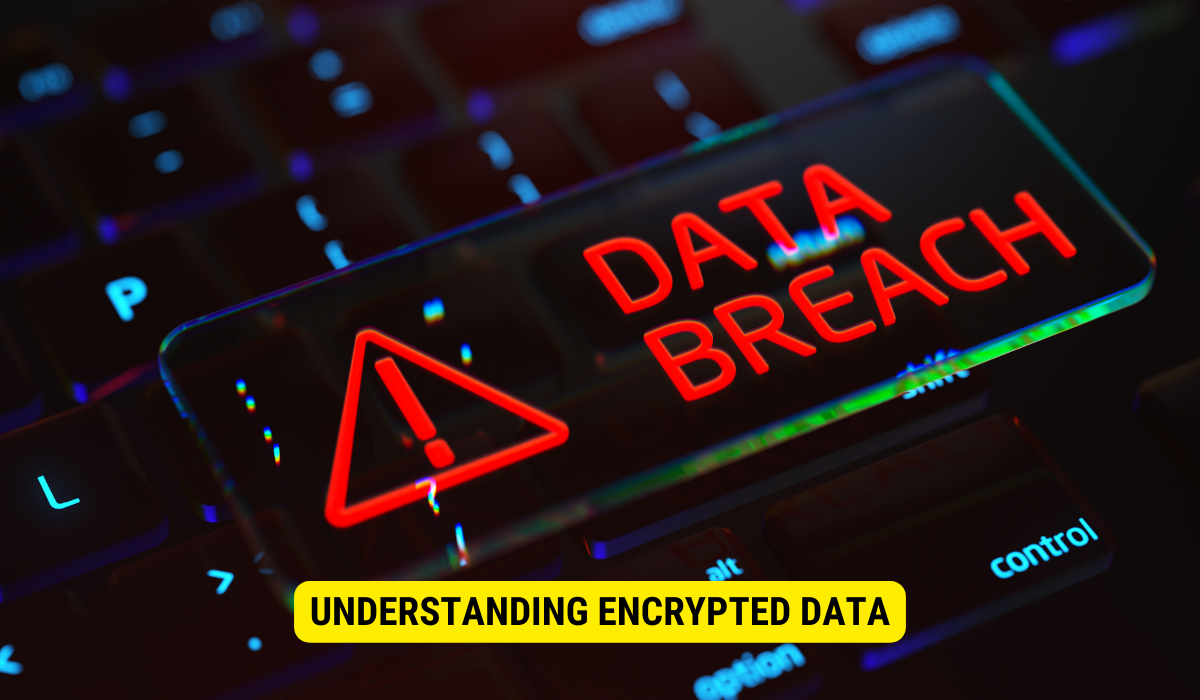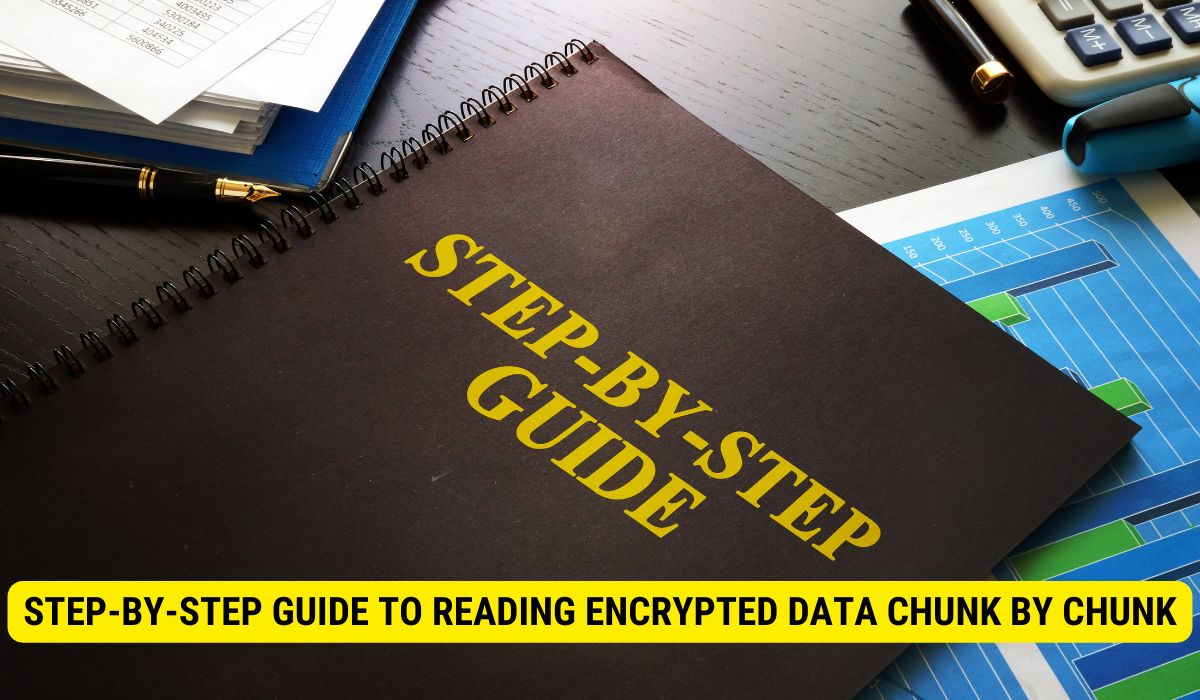To read encrypted data chunk by chunk, you need to follow these steps:
- Decrypt Initialization Vector (IV): Initialize your decryption algorithm with the correct IV.
- Chunk Size: Determine the size of each data chunk you want to read.
- Decrypt Chunk: Read a chunk of encrypted data and decrypt it using your chosen decryption algorithm and the IV.
- Process Decrypted Data: Process the decrypted data as needed.
- Repeat: Continue this process for each chunk until you have processed all the encrypted data.
I will explore the process of reading encrypted data chunk by chunk. Encryption is widely used to secure sensitive information but can pose challenges when accessing and understanding the data. We can navigate through the encryption layers and retrieve the original information by breaking down the encrypted data into smaller chunks. Read on to understand the basics of encrypted data, learn techniques for reading encrypted data, and follow a step-by-step guide to decrypting data chunk by chunk.
Understanding Encrypted Data
Before we delve into reading encrypted data, let’s first understand the basics of encryption. Encryption is a process of converting data into an unreadable format using an encryption algorithm and a secret key. The encrypted data can only be deciphered using the corresponding decryption algorithm and the correct key.
Encryption is a fundamental concept in the field of information security. It is widely used to protect sensitive data from unauthorized access and ensure data privacy. Encryption provides an additional layer of security by transforming data into an unreadable format, making it extremely difficult for attackers to make sense of the information even if they manage to access it.
The process of encryption involves the use of encryption algorithms, which are complex mathematical operations designed to transform plain text into ciphertext. These algorithms consider various factors such as the key size, algorithm strength, and mode of operation to provide secure encryption. The key size determines the length of the secret key used in the encryption process, with longer keys generally considered more secure. The algorithm strength refers to the complexity and robustness of the mathematical operations used, ensuring that the encrypted data remains protected even against sophisticated attacks. The mode of operation determines how the encryption algorithm processes the data, such as encrypting it in blocks or a stream.
The Basics of Encryption
Encryption algorithms apply complex mathematical operations to transform plain text into ciphertext. This process ensures the original data is hidden and protected from unauthorized access. Encryption algorithms consider various factors such as the key size, algorithm strength, and mode of operation to provide secure encryption.
When data is encrypted, it undergoes a series of transformations that make it appear as a random sequence of characters. This transformation is achieved by applying mathematical operations to the individual characters or blocks of the data, altering their values in a reversible way only with the correct decryption algorithm and key. The resulting ciphertext is essentially gibberish to anyone who does not possess the correct key, making it virtually impossible to understand the original message.
Encryption algorithms are designed to be computationally intensive, making it time-consuming and resource-intensive for attackers to attempt to decrypt the data without the correct key. The strength of an encryption algorithm lies in its ability to withstand various cryptographic attacks, such as brute-force attacks, where an attacker systematically tries all possible keys until the correct one is found. Modern encryption algorithms, such as Advanced Encryption Standard (AES), are widely regarded as secure and resistant to such attacks.
Importance of Data Encryption
Data encryption is crucial in today’s digital world to protect sensitive information from unauthorized access. Encrypted data provides confidentiality, integrity, and authentication, ensuring only authorized individuals can access the information. It safeguards data during transmission and storage, minimizing the risk of data breaches and ensuring data privacy.
Confidentiality is one of the primary goals of data encryption. By encrypting data, organizations can ensure that it remains unreadable and inaccessible even if it remains unreadable and inaccessible This is particularly important for sensitive information such as personal identifiable information (PII), financial data, and trade secrets. Encryption provides an additional layer of protection, reducing the likelihood of data breaches and minimizing the potential impact of unauthorized access.
In addition to confidentiality, encryption also helps maintain data integrity. By encrypting data, any unauthorized modifications or tampering attempts can be detected. The decryption process involves verifying the integrity of the ciphertext, ensuring that it has not been altered since it was encrypted. This ensures the authenticity and reliability of the data, assuring that it has not been tampered with during transmission or storage.
Authentication is another benefit of data encryption. Encryption can be used to verify the sender’s identity and ensure that the data has not been modified in transit. By encrypting data with a digital signature, the recipient can verify the sender’s authenticity and ensure that the data has not been tampered with. This helps prevent impersonation attacks and ensures the integrity of the communication.
Overall, data encryption is a critical component of a comprehensive security strategy. It helps protect sensitive information, maintain data integrity, and provide authentication. By implementing encryption measures, organizations can mitigate the risk of data breaches, safeguard their reputation, and comply with regulatory requirements regarding data protection.
Breaking Down Data into Chunks
Chunking encrypted data involves dividing the ciphertext into smaller, manageable chunks. This technique allows us to process the data gradually, decrypting and verifying each chunk separately. Breaking down the data into chunks helps prevent memory issues when dealing with large encrypted files.
What are Data Chunks?
Data chunks are smaller segments of the encrypted data. We break down the ciphertext into chunks by considering the size and structure of the encrypted file. Each chunk is typically of a fixed size or determined by the requirements of the encryption algorithm.
Benefits of Chunking Encrypted Data
Chunking encrypted data provides several benefits. Firstly, it allows us to process the data sequentially, reducing the memory footprint and improving performance. Secondly, chunking enables parallel processing of multiple chunks, enhancing overall efficiency. Lastly, chunking ensures data integrity, as we can verify the decryption of each chunk independently.
Techniques for Reading Encrypted Data
Now that we understand the importance of breaking down encrypted data into chunks let’s explore the techniques for reading this data.
Key-Based Decryption
In key-based decryption, the encrypted data is decrypted using a secret key. The key must be kept secure and known only to authorized individuals. This technique is commonly used in symmetric encryption, where the same key is used for both encryption and decryption.
Password-Based Decryption
Password-based decryption is a technique where a password or passphrase is used to decrypt the encrypted data. The password must be known to the person decrypting the data. This technique is commonly used in asymmetric encryption, where a different key pair is used for encryption and decryption.
Step-by-Step Guide to Reading Encrypted Data Chunk by Chunk
Preparing Your Encrypted Data
Before decrypting the data, ensure you have the encrypted data file and the encryption key or password. Ensure you have a secure and trusted decryption tool that supports chunked decryption.
Decoding the Data Chunks
To read encrypted data chunk by chunk, you’ll need a decryption tool that supports chunked decryption. Start by opening the decryption tool and selecting the encrypted data file. Enter the correct key or password when prompted. The tool should provide options to specify the chunk size for decryption. Choose a suitable chunk size based on the nature of the encrypted data.
The decryption tool will start processing the chunks one by one. It will decrypt each chunk, making the underlying data readable. The tool may display each chunk’s contents or export them as separate files for further analysis.
Verifying the Decrypted Data
After decrypting all the chunks, it is important to verify the integrity and accuracy of the decrypted data. Compare the decrypted information with the original unencrypted data to ensure they match. If discrepancies are found, it could indicate potential issues with the decryption process or corruption in the data chunks.
Common Challenges and Solutions
Dealing with Corrupted Data Chunks
Corrupted data chunks can be a challenge when reading encrypted data. One approach is to reacquire or redownload the encrypted data and attempt decryption again. If the corruption persists, consult with data recovery experts or seek assistance from the encryption tool provider to address the issue.
Overcoming Incorrect Decryption Keys
Using an incorrect decryption key can prevent successful decryption of the encrypted data. Ensure that you have the correct key or passphrase before attempting decryption. If the key is lost or forgotten, explore recovery options provided by the encryption tool or seek professional assistance for data recovery.
Key Takeaways
- Encryption transforms data into an unreadable format using an encryption algorithm and a secret key.
- Breaking down encrypted data into chunks allows us to process and decrypt the data gradually.
- Key-based decryption uses a secret key, while password-based decryption uses a password or passphrase.
- Verify the decrypted data for integrity and accuracy after decrypting the chunks.
- Corrupted data chunks and incorrect decryption keys are common challenges when reading encrypted data.
Frequently Asked Questions
Why is data encryption important?
Data encryption is essential to protect sensitive information from unauthorized access. It ensures data confidentiality, integrity, and authentication, minimizing the risk of data breaches.
What are the benefits of chunking encrypted data?
Chunking encrypted data allows for sequential and parallel processing, reduces memory usage, and ensures data integrity by verifying each chunk independently.
What should I do if I have forgotten the decryption key?
If you have forgotten the decryption key, explore recovery options provided by the encryption tool or seek professional assistance for data recovery.
Conclusion
Now that you have a comprehensive understanding of how to read encrypted data chunk by chunk, you can easily apply these techniques to access and decipher encrypted information. Always prioritize data security and follow best practices to protect sensitive data throughout decryption.
